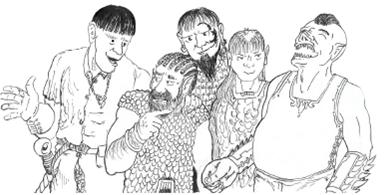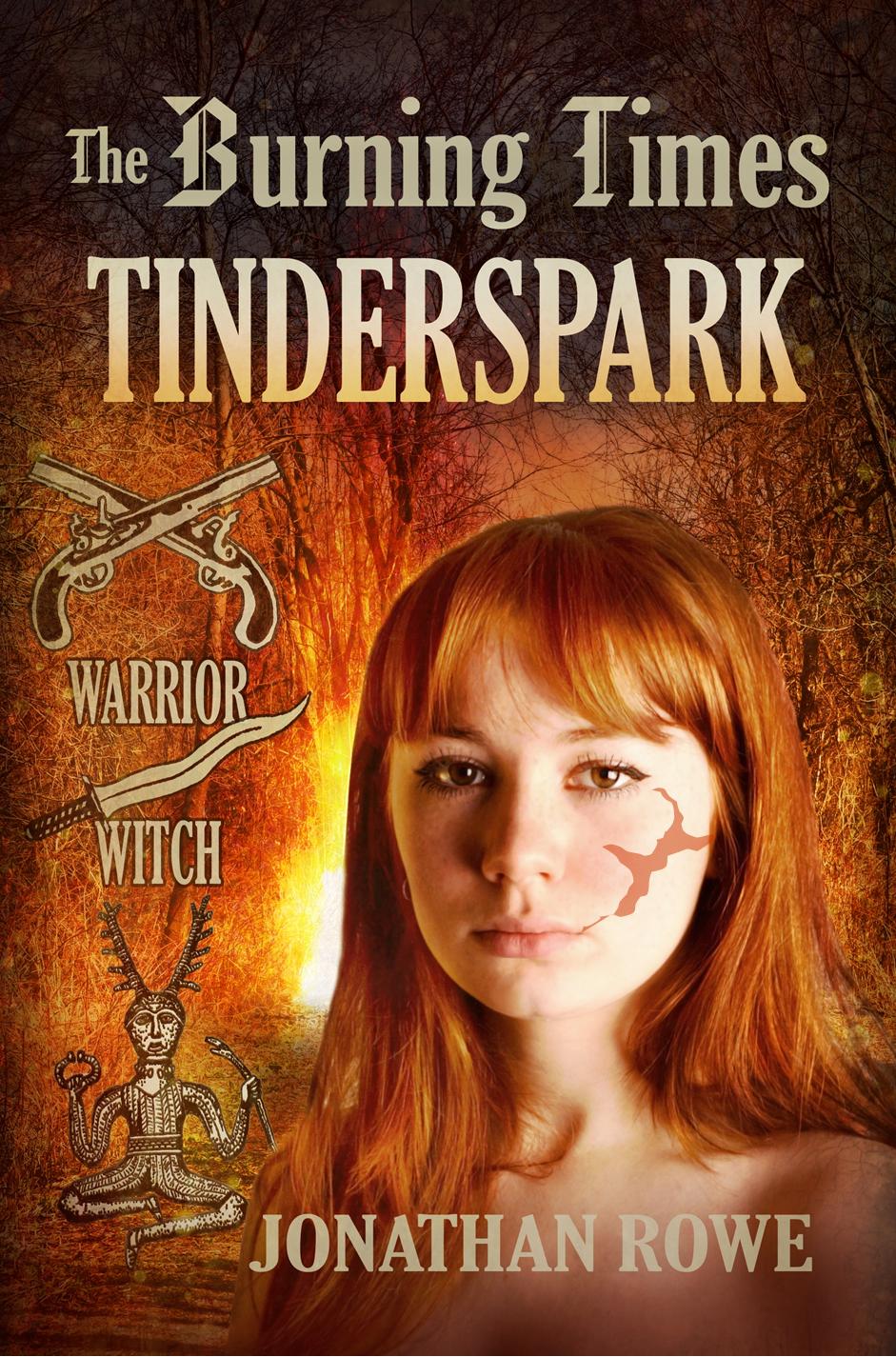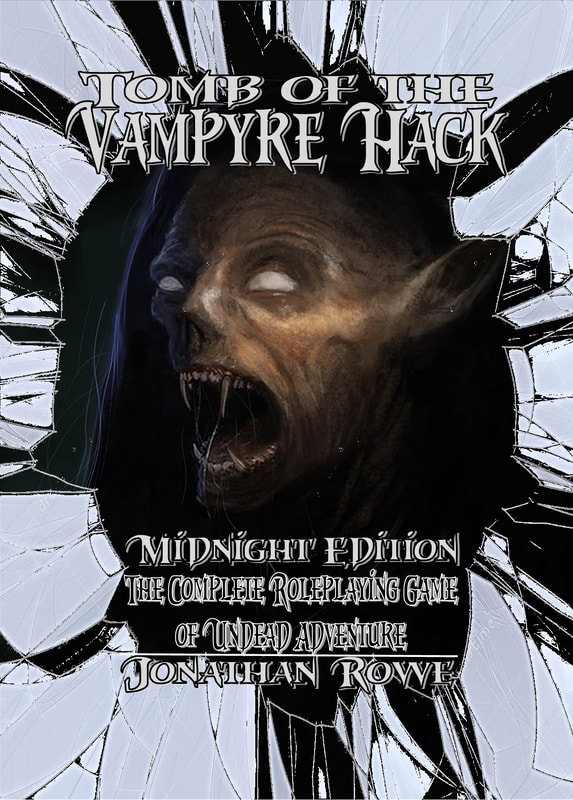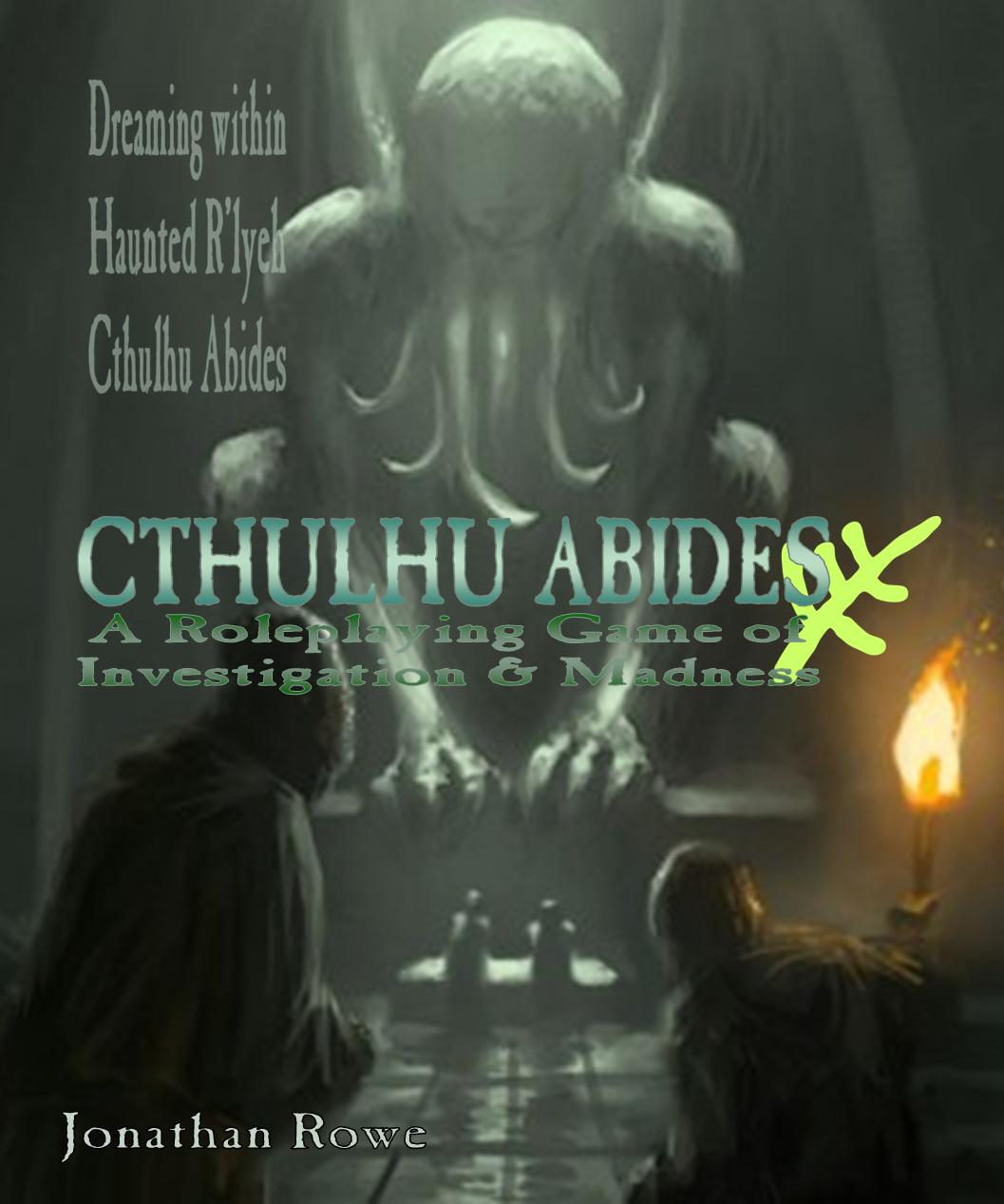|
Simon "Milo" Miles is the creator of the Dunromin University Press, a massive campaign setting for his homegrown fantasy RPG using OSRIC. Now, OSRIC is a retro-clone of 1st ed AD&D, so what Simon is offering is the guiltiest of pleasures: a campaign world for AD&D as things used to be before Dragonlance, before Forgotten Realms, before Ascending Armour Class, back when Gygax was king and the TSR Wizard graced the modules and rule books. Good times. Ah, the Game Wizard! Check out OSRIC's page by clicking the image: download the rules for free In fact, The City of Karan contains hardly any statistics, so the sourcebook works perfectly well for any Old School iteration of D&D or its clones and pastiches. Simon has been developing Barnaynia, the world of his youthful AD&D campaign, and has published a wealth of settings and homebrew kits through drivethrurpg, mostly centred around his "ultimate fantasy city" of Dunromin. Back in January, he released another sourcebook for Dunromin's sister-city of Karan - and this seems like a good time to jump on board his creation and take a look around. Simon just COMMITS, doesn't he? Look at that AD&D module pastiche! Click the image to view the product - it's pay-what-you-want The City of Karan is a 70-page PDF sourcebook for a walled city in the far west of the 'Land of the Young', guarding a vital pass through the mountains. It's a border city, abutting a wilderness of roaming barbarians and abandoned ruins, but linked to the kingdom's hinterland by busy roads. In other words, it's exactly the sort of place that Fantasy RPG campaigns start off in. The dramatic West Gate with its dizzying bridge greets invaders (or returning adventurers) from the wilderness. Simon offers an exemplary discussion of Karan's history, geography and politics, first in the Players Guide section (no secrets, just rumours) and then in the GM's Section (NPCs, factions and plot ideas). His style is clear and the tone is light: a few jokes, a bit of vernacular language, it stays away from the ponderous Gygax-isms that made a generation of hobby writers think that they needed to imitate the Encyclopaedia Britannica if they wanted to sound like a 'proper' author. Seriously, I flew through this stuff. The art is ... idiosyncratic. Simon produces a lot himself, in a cartoon style, and Gareth Sleightholme provides the rest, in more conventional fantasy portraits. I'm not sure whether this larky, zany aesthetic really fits the tone of Karan or not. The Karanites have a reputation for being humourless, but look at this: If the art doesn't really work for you, don't worry, because Simon also has some excellent - and completely serious - street plans and cut-aways to orientate you in the city: What makes Karan interesting? In many ways, Karan is the oldest of old school fantasy city settings. Clerics of Norse and Olympian deities rub shoulders with Druids. There are half-orcs in the City Guarde (not sure why it has the -e suffix). People have names like Olandy Crystal or Seth Tolweezel. It's not too whacky though. Yes, there are minor air elementals protecting the battlements and a cadre of sentries mounted on griffons, but that's about as high as the fantasy goes. There's no magical market, no golems directing traffic, no mind flayer innkeepers or rent-a-zombie street corner necromancers. It's low-to-medium fantasy. The city has a medieval German vibe: cobbled streets, multistorey stone town houses, gabled rooftops, lots of turrets. It's supposed to be a big centre for craftwork and production, somewhere like Worms, Aachen or Nuremberg. Nuremberg: lovely, isn't it? The most striking aspect to the city is its cave system - a whole series of underground streets (known as 'the Creeps') with houses and shops and, beneath that, mines. This gives the city a sort of subway system, so you can pop below ground and head off down the Old Creep or the Dry Creep to emerge in a friend's cellar, the basement of a shop, or perhaps outside the city altogether. Simon invests his best efforts in giving the different parts of this undercity vivid names and distinctive appearances. It's an aspect of life in Karan that players will remember and GMs will hang many plots on. Simon also gives the fortifications and rulers of the city much coverage, including the different regiments of the Garde, the major Temples and their senior Clerics and the top government officials and their role in the lives of citizens. He also includes invaluable (because simple) tables for randomly generating businesses in order to populate any given street. It's good to see some consideration of local culture: the luxury status of wine, shops being closed for innumerable religious holidays, the autumn Beerfest, street sewers and sedan-chairs. There's a good treatment of the criminal subculture of Karan in the GM's section, including some lively personalities of varying nastiness. However, in such a well-policed society (and see below for more on this), the criminal classes are rather subdued. The book concludes with a complete NPC roster (no stats, just profiles and relationships) and an actual honest-to-goodness index. What makes Karan dull? I should qualify this, because it isn't necessarily a criticism. People use city sourcebooks like this for different reasons. Some people just want to cannibalize street plans, encounter tables and useful NPCs for their own campaign cities. In these cases, the more universal these details are the better. Karan could be a big walled border town in almost any fantasy RPG campaign and Olandy Crystal would fit well as a NPC in any scenario. Some people want a pre-designed city to act as a backdrop to their dungeon-based adventures. They want somewhere the adventurers can call 'home', where they can sell their loot and buy hirelings or magical healing or training, they want high-level NPCs to act as patrons and maybe they want to know a bit about rich merchants and the city watch so that Thief/Rogue PCs can have the occasional heist-themed 'town adventure'. If you fall into these categories, then my criticisms here won't apply to you. Karan is great for you. Skip to 'final thoughts' as Rahdo would say. But maybe you're a different sort of consumer. Maybe you already have towns/cities in your own campaign and you have no problem creating your own street plans and NPC rosters; in fact, let's say you quite enjoy that side of things. In that case, you're looking for a city that's not just detailed, but distinctive: something that you couldn't have come up with yourself. For example, maybe you want something that's culturally very specific. Maybe something exotic, like pre-Conquistador Tenochtitlan with its floating fields, canals, aquaducts and population of 400,000! Maybe just something very flavourful, like Warhammer Fantasy Roleplay's Altdorf, with its rigorous pseudo-Teutonic culture and language. By comparison, Karan is a bit vanilla. It's another Northern European walled city. Although it's supposed to have a Franco-German culture, no particular attempt has been made to convey this linguistically, through locations, titles or personal names: Samson, Molly and Dudley are more typical than Gunther or Willem in the NPC roster. You're in Gygax-land; and not fantasy-Germany. Or maybe you want a set of complex political conflicts because you're not good at plotting such things yourself. But here again, everything in Karan is quite static. The senior NPCs all get lively profiles, but they're not doing anything: they're just waiting for PCs to walk into their lives with trinkets to sell, curses to lift, training needs to be met or other services to demand. The nearest thing to NPC interaction in the city is the love-triangle around flirtatious druidess Olandy Crystal (Fighters Guild leader Alun Dethelt fancies her rotten, to husband Farnir Crystal's displeasure) but even this isn't going anywhere: Alun isn't doing anything about his amour and Farnir is too timid to make a fuss. Or finally, maybe you want a frictive setting, something that will cause the PCs problems and force players to adapt to the unfamiliar. Maybe you want to explore slavery, women-as-chattel, the divine right of kings, witch-hunting or peasant revolts. You want a city where, as soon as the PCs arrive, there's stuff they have to take a side on. However, Karan is just too darned nice. Women have a pretty decent deal in Karan, by medieval standards, if not by liberated Dunromin standards: Women ... are allowed more freedom and independence than was traditional in Europe in medieval times, but the fairer sex remain much less ‘liberated’ than in Dunromin. Slavery is not really a thing: Slaves are rare with good servants being recognised and rewarded for their skills as much as artisans The City Guarde are professional law-enforcers and don't need to be bribed: the Guarde, the force of law and order in Karan, is quite serious and energetic in the pursuance of its role ... [and will] turn up promptly when called and execute justice rapidly and fairly. Some visitors have been quite affronted when their name, contacts and gold seem to have no relevance with the Karan Guarde when it comes to determining guilt and innocence. In other words, except for the street sewers, Karan is the sort of place you would love to go to for your holidays. Remember holidays? Let me be clear, I don't want to criticise Karan for failing to be something it doesn't set out to be. If you want a detailed backdrop for a fantasy campaign whose focus lies elsewhere (such as down a dungeon), then all this cultural and political stuff would only get in your way. You want a fairly universalised setting. If everybody had culturally-specific Teutonic names like they do in Warhammer's Reikland, then it would just make them hard to pronounce and difficult to invent on-the-fly, right? If there were intense conflicts rocking the city to its foundations, it would just make it more difficult for PCs to rent rooms in an inn, hire some men-at-arms and find a Cleric to heal Derek's mummy-rot, right? With that in mind, let's go to Final Thoughts... Final Thoughts Look, when I was a teenager DMing my own (Greyhawk-set) D&D campaign, I would have LOVED a resource like this: I would have DIED for something like this. I would have used it to represent Marner, the capital of the Barony of Ratik where my campaign was set. I would have located the infamous tower one PC built within it. My plotline with the Assassin's Guilt and the Vampire Infestation would have taken place here. It would have done wonders for my world building, my sense of immersion, my use of NPCs. It would have been brilliant. If only I could send it back in time to my 15-year-old self! Ah. Memories! Then, later, in my 20s, when I was creating my own campaign settings with home-grown cultures and mythologies, I would have leapt upon this product for its maps, for its random location tables, for its details about the military composition of the regiments and the various guilds - but I would have renamed things and put my own plots and conflicts into the city. It would have been great value for me. Now, though, I'm less open to this sort of thing. I'm more of a theatre-of-the-mind sort of person, so maps matter less. I'm better at improvising NPCs with their own conflicts and drives. I like a bit of cultural darkness in my settings: prejudices, grievances, superstitions and injustices. I'm interested in political machinations, religious vocations and family ambitions. In a nutshell, what Karan offers, I don't need, and what I want, it tends to lack. But wait, stop, it doesn't end there. The current crisis has altered my gaming habits of course. I'm getting together with friends online to do RPGs and because the group is diverse and the medium unfamiliar, we're going back to classic D&D and exploring mega-dungeons, rather than all the clever-clever NPC-driven stuff I usually focus on. And a mega-dungeon campaign needs a city in the background: somewhere the PCs can go to recruit hirelings and get a Cleric to cure Derek's mummy-rot. So I'm going to use Karan for exactly the reasons I laid out above: it's an invaluable resource for a Gygaxian OSR campaign. I hope I've made clear my feelings about this product: how good it is for what it is, but how what it is might not be what everybody wants. Perhaps Simon's next setting will get down and dirty with somewhere a bit more gritty, a bit less romanticised, a bit more dynamic. But of course, a conflicted setting like that might not be so darned useful for your average roleplayer!
1 Comment
|
30 Minute Dungeons
Essays on Forge
FORGE Reviews
OSR REVIEWS
White Box
THROUGH THE Hedgerow
Fen Orc
I'm a teacher and a writer and I love board games and RPGs. I got into D&D back in the '70s with Eric Holmes' 'Blue Book' set and I've started writing my own OSR-inspired games - as well as fantasy and supernatural fiction.. Archives
July 2024
Categories
All
|










 RSS Feed
RSS Feed
























